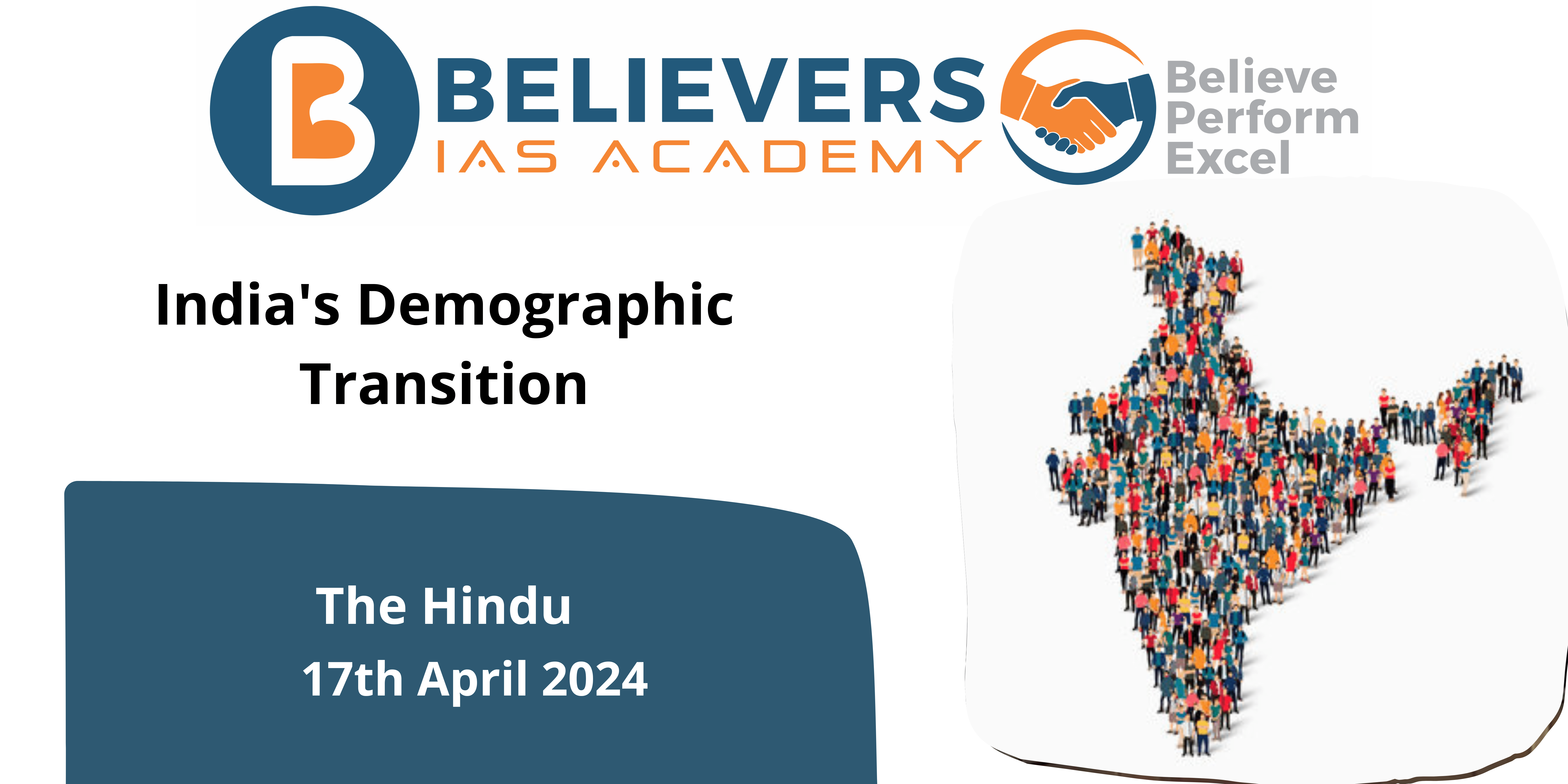India’s Demographic Transition
Context:
India’s population growth trajectory has garnered attention, with projections indicating a surge to 1.7 billion by 2065, as per the UN Population Division.
- This highlights a pivotal demographic shift, underscoring the ongoing transition of the Demographic Dividend in India.
Relevance:
GS-01 GS-02 (Government Policies & Interventions, Population)
What is Demographic Transition and Dividend?
- Demographic transition refers to the evolution in population structure over time which are influenced by factors like birth and death rates, migration, and socio-economic conditions.
- The Demographic Dividend occurs when a nation’s population composition shifts from a dependency on children and elderly to a larger working-age population.
- This transition can propel economic growth if leveraged effectively.
Drivers of Demographic Transition in India:
- Rapid economic progress since the early 21st century has been instrumental, enhancing living standards, healthcare, and education, consequently reducing fertility rates.
- Decline in infant and child mortality rates has diminished the need for larger families, fostering confidence in fewer children.
- Increasing education and workforce participation among women have led to delayed childbirth and smaller family sizes.
- Better housing and basic amenities have influenced family planning decisions, promoting smaller family units.
Impact of Evolving Demographics in India:
- Economic Ramifications: Increased immigration may augment the labor force, yet unskilled migrants can strain the economy. Alterations in household compositions and age demographics might alter consumer spending habits.
- Social Ramifications: Evolving demographics can reshape family sizes, thus influencing societal norms and expectations. Moreover, heightened migration may foster greater cultural diversity within communities.
- Political Consequences: Swift demographic shifts or perceived disparities could fuel social discord and political turbulence. Additionally, changes in demographics might alter political representation and voting trends, potentially reshaping policy agendas.



